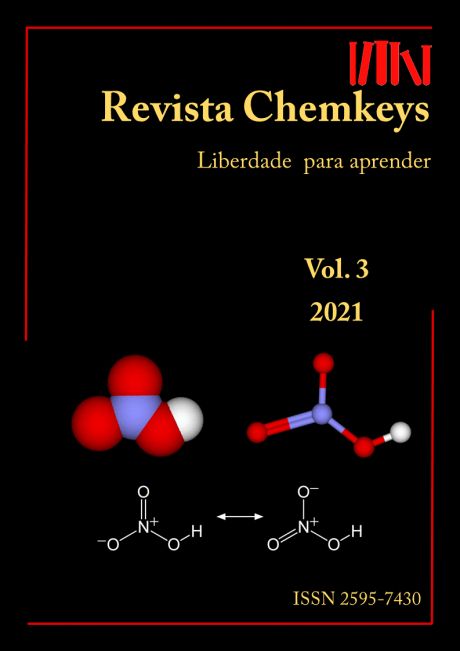Abstract
Redox titrations are relatively simple, fast, and low-cost analytical procedures used to determine active redox species. Analogously to cases involving acid-base systems, where the course of a titration can be followed by means of a pH curve versus the volume of the titrant (V), a titration involving a redox reaction can be monitored by observing the Potential curve (ε ) versus the volume of the titrant (V), provided that the redox system to be used fulfills all the necessary requirements for a chemical reaction to be considered suitable for use in a titration. Once these requirements are met and based on their semi-reactions, it is possible to describe a redox titration with mathematical equations and build its theoretical titration curve, as was done previously for non-redox systems. However, despite their importance, they have received relatively less attention than volumetry involving non-redox reactions. There is no specific reason that can be attributed to this observation, but it can be speculated that this is not since the use of analytical procedures involving oxidation-reduction processes requires additional theoretical knowledge and experimental care. This article seeks to provide the reader with an overview of the redox volumetry and its titration curves, drawing attention to the need for greater care when working with this technique.
References
- Andrade JC de. Química analítica básica: equilíbrios de óxido-redução. Rev. Chemkeys [Online]. v.2, e020004, 2020, 10pp. Disponível em: https://econtents.bc.unicamp.br/inpec/index.php/chemkeys/article/view/14771 - doi: 10.20396/chemkeys.v2i..14771
- International Union of Pure and Applied Chemistry - IUPAC. Grandezas, Unidades e Símbolos em Físico-química - Green Book2018, p. 74-80. A tradução para o Português da 3ª edição em inglês, realizada pelas SBQ e SPQ, está disponível em: http://www.sbq.org.br/livroverde/
- International Union of Pure and Applied Chemistry - IUPAC. Compendium of Analytical Nomenclature: Definitive Rules - Orange Book, 3rd ed., Blackwell Science Ltd., Oxford, Cap. 8, 1997. Também disponível em: http://media.iupac.org/publications/analytical_compendium/
- Burgot J-L. Ionic Equilibria in Analytical Chemistry, Capítulos 16 e 17, Springer, New York, 2012.
- Bishop E. Some Theoretical Considerations in Analytical Chemistry - Part VI: The Precise Calculation of Data for Redox Titration Curves. Anal. Chim. Acta, 1962, 26: 397-405.
- Bishop E. Some Theoretical Considerations in Analytical Chemistry-Part VII: The Influence of Absolute Concentration on the Parameters of Redox Titrimetry. Anal. Chim. Acta, 1962, 27: 253-261.
- Goldman JA. A General Equation for the Description of Redox Titration Curves. J. Electroanal. Chem., 1966, 11: 255-261.
- Goldman JA. Further Considerations on Redox Titrations Equations. J. Electroanal. Chem., 1966, 11: 416-424.
- Goldman JA. The Locations of Inflection Points on Titration Curves for Symmetrical Redox Reactions. J. Electroanal. Chem. Interf. Electrochem. 1967, 14: 373-383.
- Goldman JA. The Locations of Inflection Points on Titration Curves for Homogeneous Reactions. J. Electroanal. Chem. Interf. Electrochem. 1968, 18: 41-45.
- Goldman JA. Redox Equilibria - Part IV: Titration Curve Equations for Homogeneous and Symmetrical Redox Reactions. J. Electroanal. Chem. Interf. Electrochem. 1968, 16: 47-59.
- Goldman JA. Redox Equilibria - Part VI. A Completely General Titration Curve Equation for Homogeneous and Symmetrical Redox Reactions. J. Electroanal. Chem. Interf. Electrochem. 1968. 19: 205-214
- de Levie R. A Simple Expression for the Redox Titration Curve. J. Electroanal. Chem., 1992, 323: 347-355.
- Martín J, Estévez LO, Asuero AG. Redox - Principles and Advanced Applications, Cap6, INTEC, 2017. Também disponível em https://www.intechopen.com/chapters/55292
- Keszei E. Chemical Thermodynamics - An Introduction, Cap.9, Springer-Verlag, Berlin, 2012.
- Standard Reduction Potentials at 25°C. CRC Handbook of Chemistry and Physics, 84th edition, 2004. Disponível em: https://saylordotorg.github.io/text_general-chemistry-principles-patterns-and-applications-v1.0/s33-appendix-e-standard-reduction-.html
- Vogel AI. Análise Química Quantitativa, ed.: Jeffery GH, Bassett J, Mendham J, Denney RC., Editora Guanabara Koogan, 5ª ed., Rio de Janeiro, 1992, p. 294-339.
- Baccan N, Andrade JC de, Godinho OES, Barone JS. Química Analítica Quantitativa Elementar, Cap. 5, 3ª ed. revisada, 5ª reimpressão, São Paulo, Editora Edgard Blucher, 2008.
- Andrade JC de. Química Analítica Básica: Volumetria de Neutralização - Conceitos e Curvas de Titulação. Rev. Chemkeys, Campinas, SP, v.2, e020002, 2020, 14pp. Disponível em: https://econtents.bc.unicamp.br/inpec/index.php/chemkeys/article/view/13737/9023 - 10.20396/chemkeys.v2i.13737
- Butler JN. Ionic Equilibrium: A Mathematical Approach, Cap. 11, Addison-Wesley Publishing Co., 1964.

This work is licensed under a Creative Commons Attribution-NonCommercial-ShareAlike 4.0 International License.
Copyright (c) 2021 Revista Chemkeys


